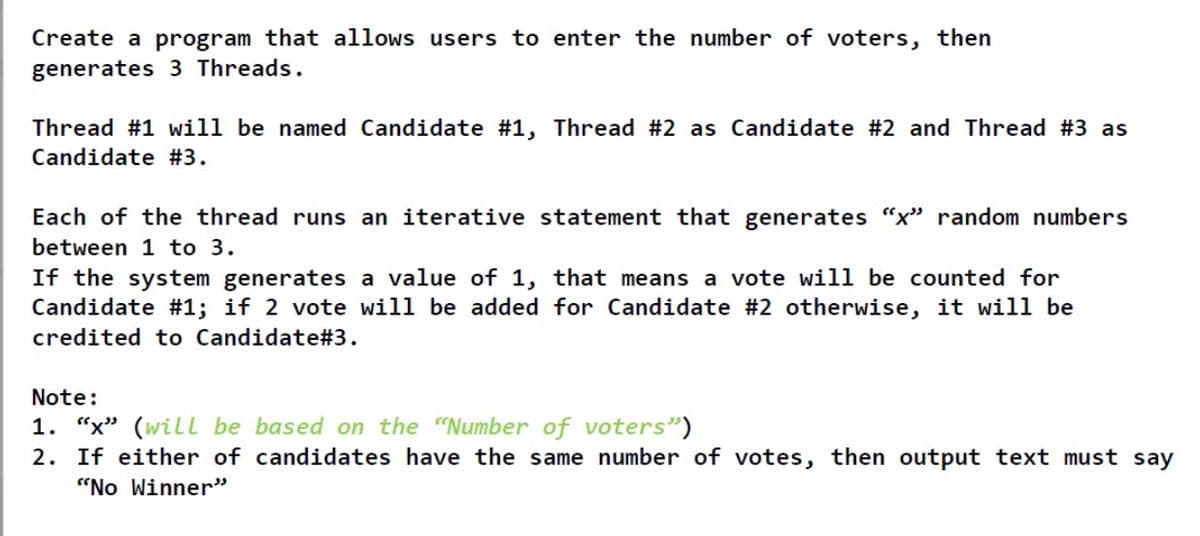ould be edited in my code below to acheive the desired outcome? import java.util.Scanner; class program { } class prog1 extends program implements Runnable { private String nVoters = new String(""); public prog1 (String nVote){ nVoters = nVote; } @Override public void run(){ for (int x = 1; x <= input; x++){ System.out.println(" Voter " + x + "\t" + nVoters + "= " );
What could be edited in my code below to acheive the desired outcome?
import java.util.Scanner;
class
}
class prog1 extends program implements Runnable {
private String nVoters = new String("");
public prog1 (String nVote){
nVoters = nVote;
}
@Override
public void run(){
for (int x = 1; x <= input; x++){
System.out.println(" Voter " + x + "\t" + nVoters + "= " );
}
}
}
public class Quiz2 {
public static void main(String args[]){
Scanner sc = new Scanner(System.in);
for (int x = 0; x < args.length; x++){
System.out.println(args[x]);
}
System.out.print("Enter number of voters: ");
int input = sc.nextInt();
Runnable r = new prog1("Thread #1");
Thread Candidate1 = new Thread(r);
Candidate1.start();
r = new prog1("Thread #2");
Thread Candidate2 = new Thread(r);
Candidate2.start();
r = new prog1("Thread #3");
Thread Candidate3 = new Thread(r);
Candidate3.start();
}
}
![Command Prompt
Enter # of voters: 3
Voter 1 Thread #1 = 1
Voter 2 Thread #1 = 3
Voter 1 Thread #3 = 2
Voter 1 Thread #2 = 1
Voter 2 Thread #2 = 3
Voter 3 Thread #1 = 1 [Voting closed]
Voter 2 Thread #3 = 2
Voter 3 Thread #2 = 1 [Voting closed]
Voter 3 Thread #3 = 2 [Voting closed]
Candidate #1 has 4 vote(s)
Candidate #2 has 3 vote(s)
Candidate #3 has 2 vote(s)
Candidate #1 Wins!!!
Thread #1 Finished 1st
Thread #3 Finished last](/v2/_next/image?url=https%3A%2F%2Fcontent.bartleby.com%2Fqna-images%2Fquestion%2Fca2180eb-e455-463f-9a9e-dd04cac7e66f%2F37f3dd28-8c6e-41e7-97c7-ba12188ce644%2Fw5hwj7h_processed.jpeg&w=3840&q=75)

Step by step
Solved in 2 steps









